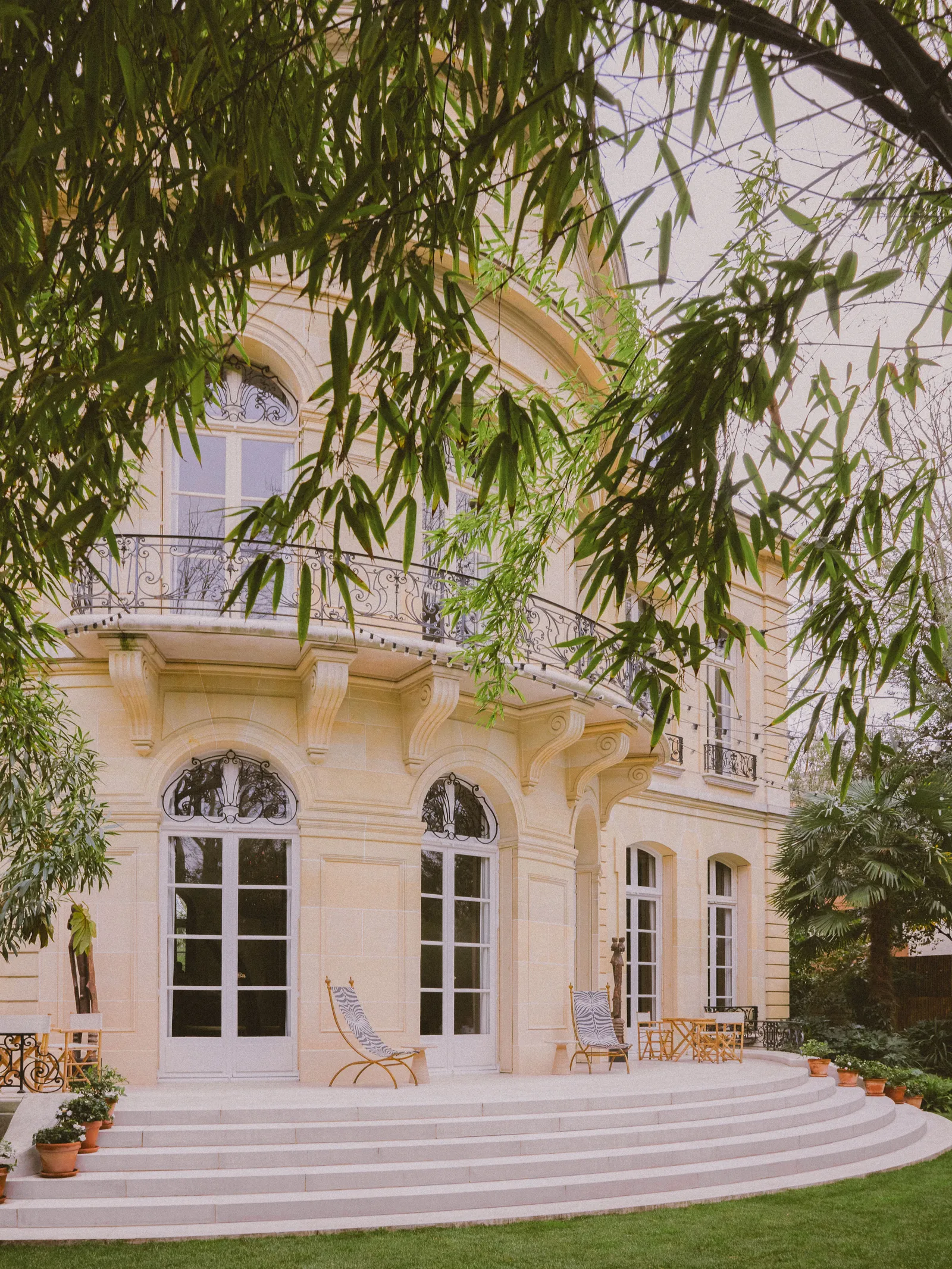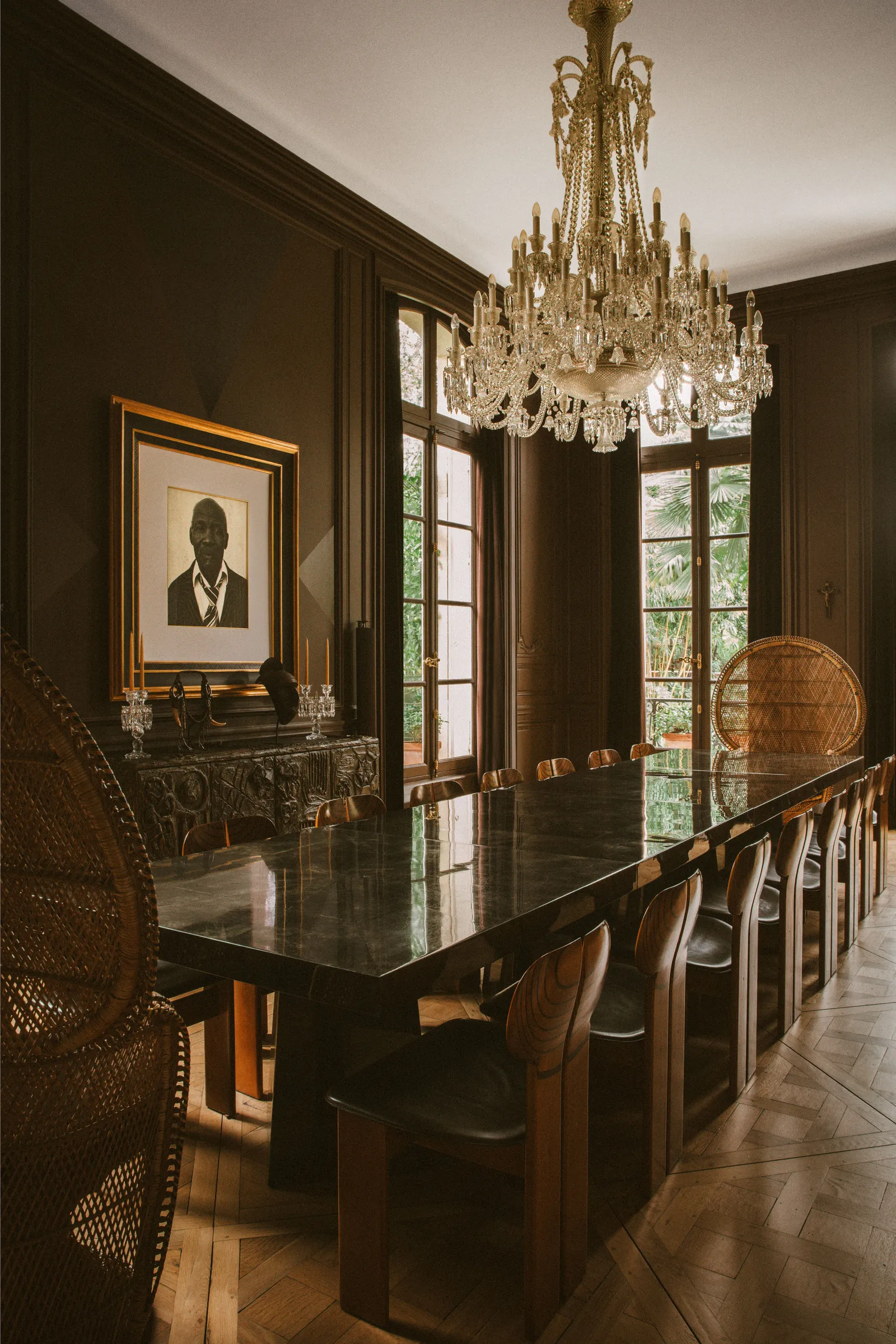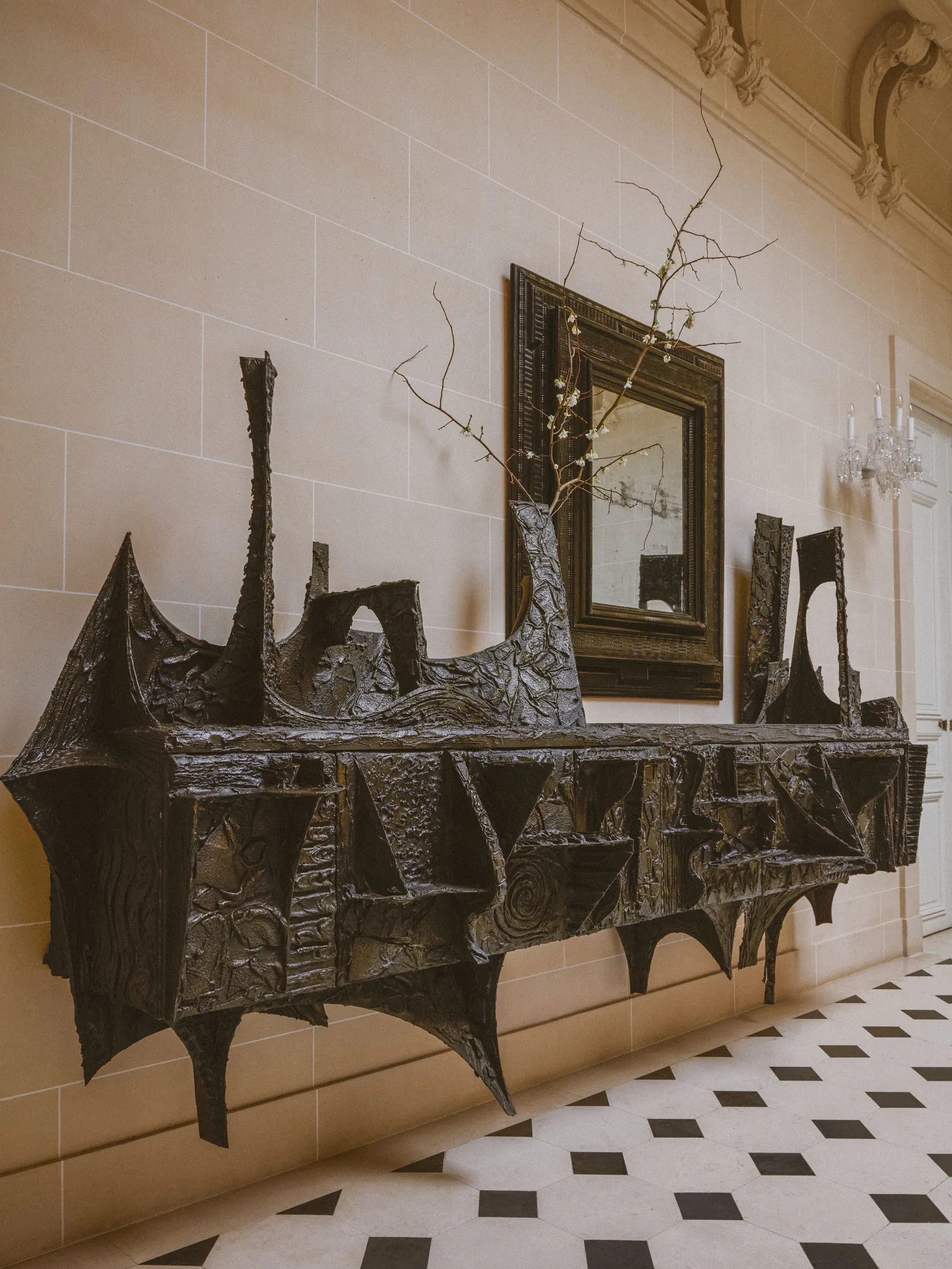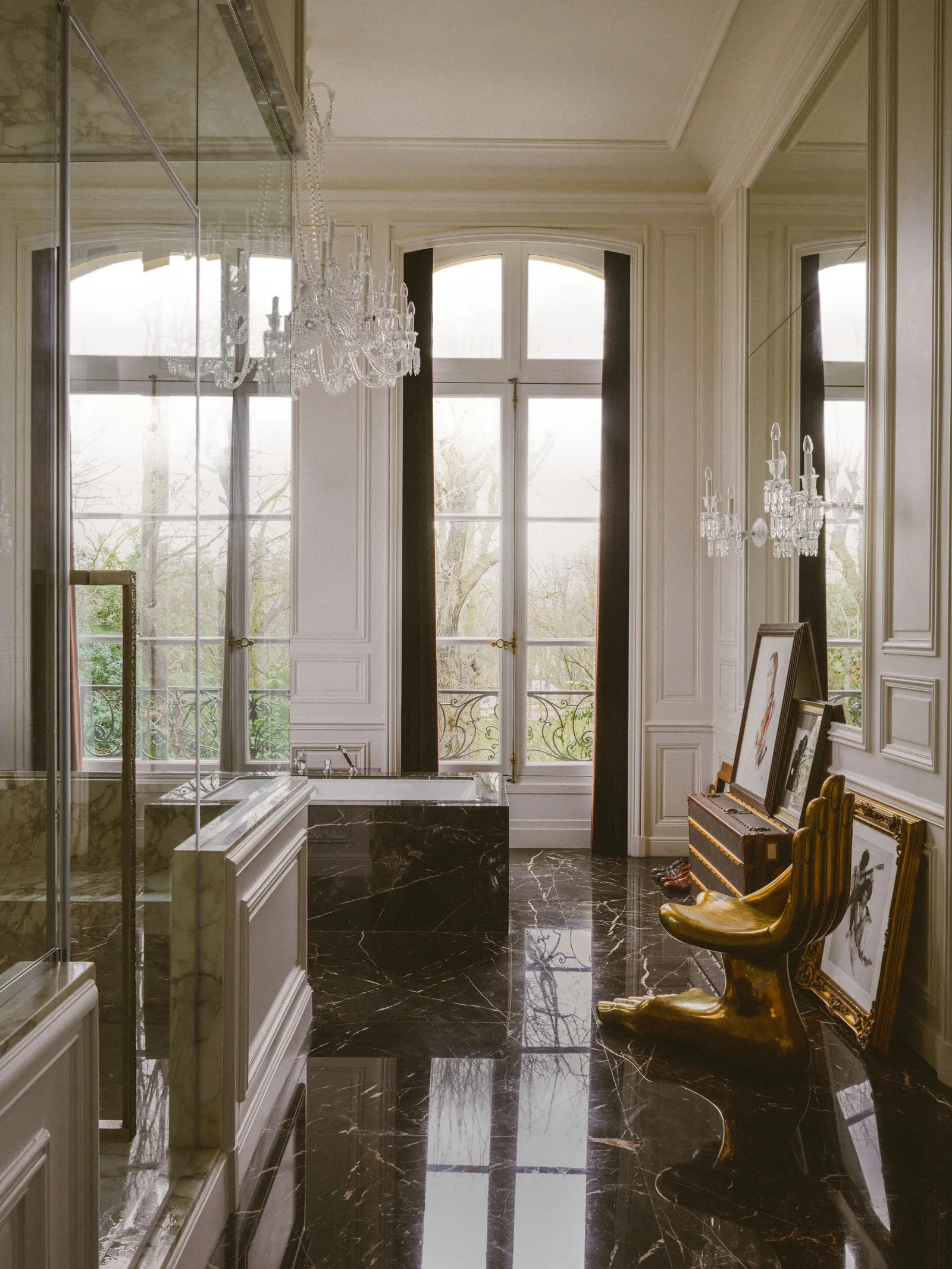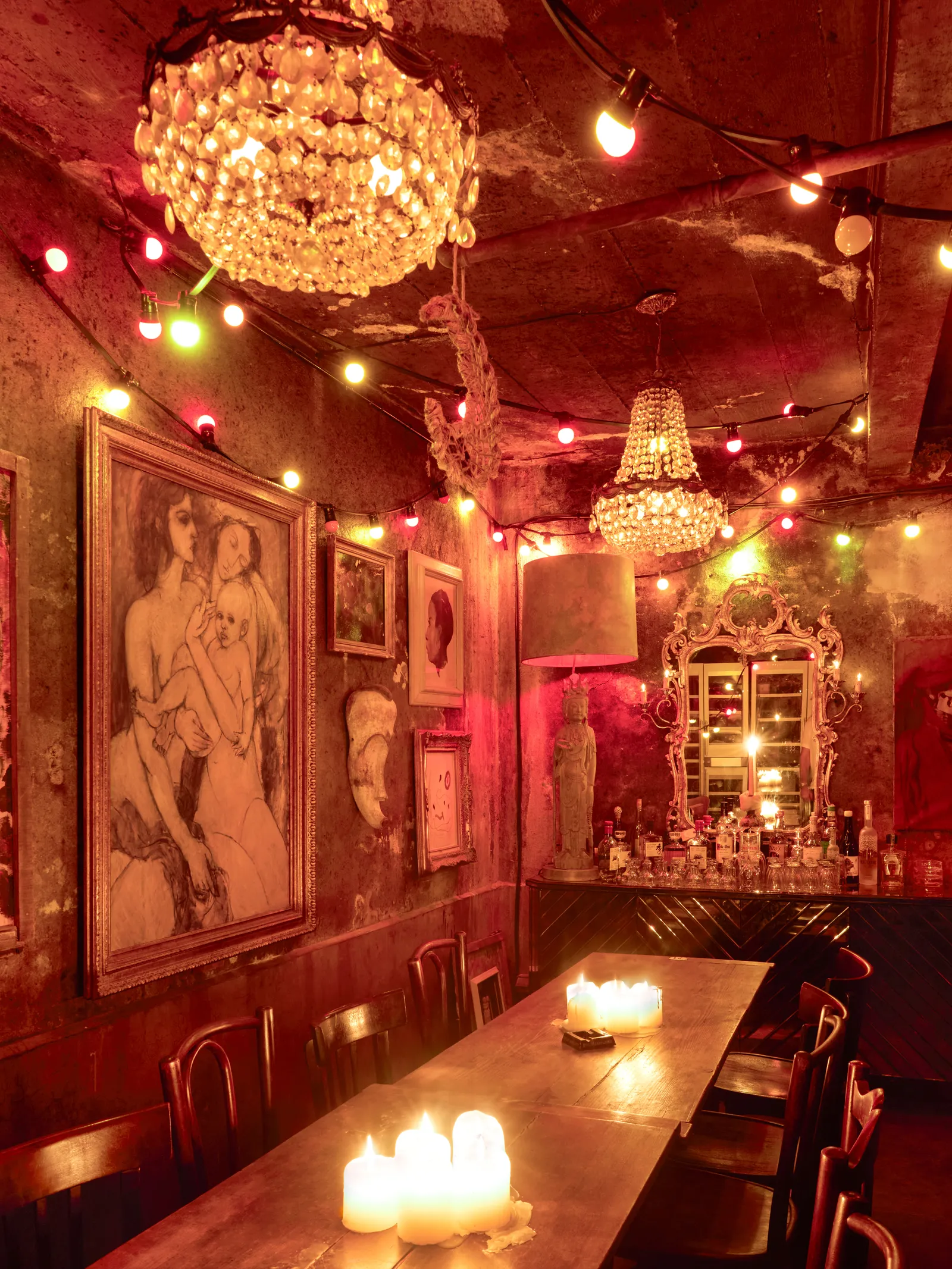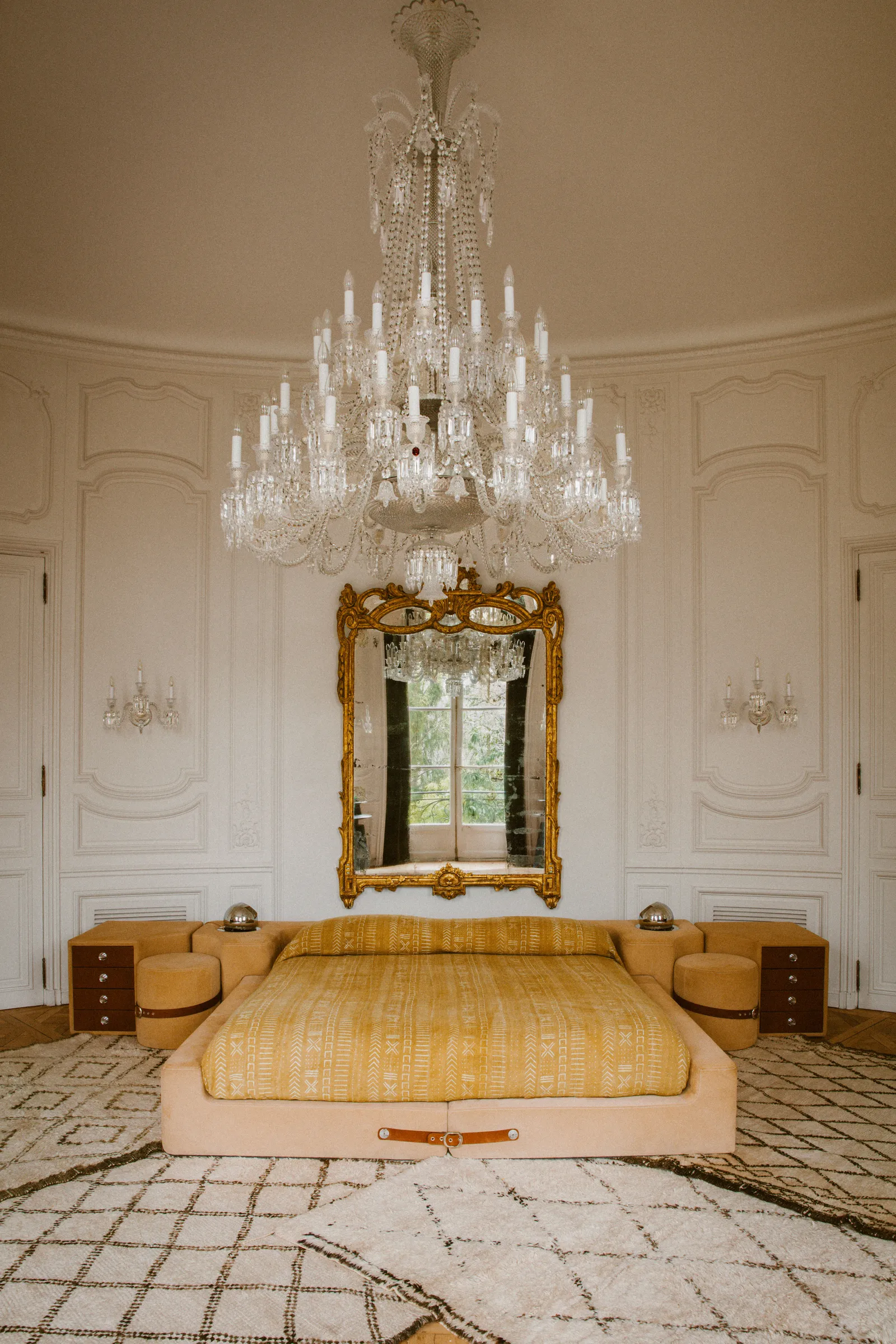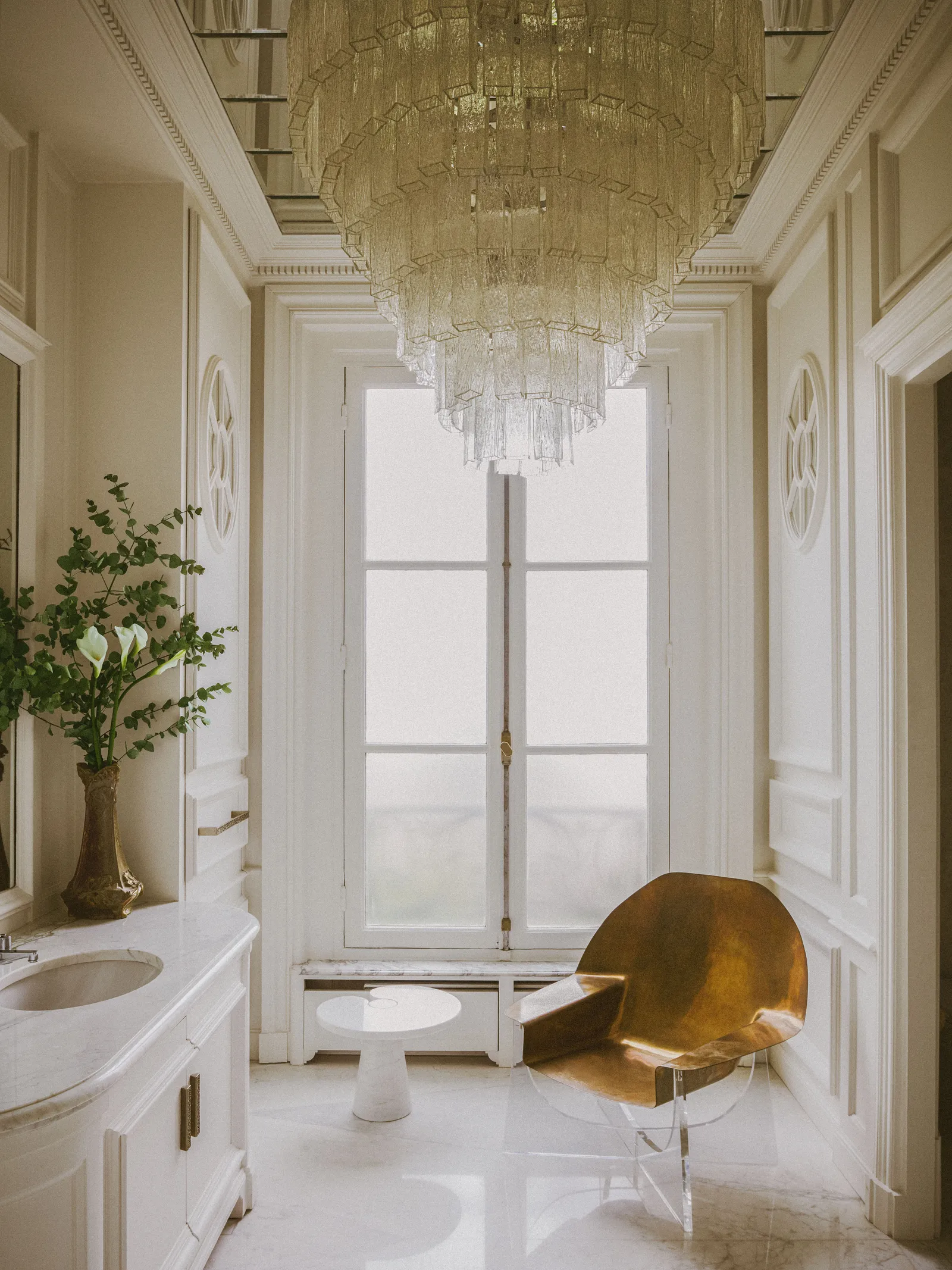Inside Hôtel de Roxie: Lenny Kravitz's Parisian Mansion Is a Living Tribute to Black Legacy, Art, and Soul
- Sahar
- Apr 16
- 5 min read
Lenny Kravitz didn’t just purchase a home in Paris—he consecrated a space. In his most intimate feature yet with Architectural Digest, the Grammy-winning rock icon-turned-designer peels back the curtain on his Parisian mansion, now known as Hôtel de Roxie.
Photography by Matthieu Salvaing | Styled by Sarah de Beaumont
Once the aristocratic estate of Countess Anne d’Ornano, the 1920s manor has been reborn under Kravitz’s vision into a soulful monument—part sanctuary, part museum, and wholly spiritual.

This isn’t just luxury real estate. It’s a curated altar to Black artistry, ancestral memory, and the enduring power of legacy. Every room, object, and chord played in this home has been chosen with reverence—and nothing is accidental. Kravitz reminds us that home is more than where we sleep. It’s where we become.
From Rock Star to Renaissance Man
Lenny Kravitz has always blurred boundaries. Son of Bahamian-American actress Roxie Roker and Ukrainian-Jewish producer Sy Kravitz, he was raised in two very different worlds, Uptown Manhattan’s Beaux-Arts formality and Brooklyn’s Bed-Stuy warmth. That fusion became his superpower, and it’s what makes his design sensibility feel so grounded yet elevated, spiritual yet stylish.
When he first stepped foot in Paris in 1989 at just 25, he was chasing dreams and promoting his debut album Let Love Rule. But even then, something about the City of Light felt like home. Fast forward to the early 2000s, and Kravitz set out to find a modest apartment—just a creative escape to write, rest, and vibe. But the universe had other plans.
When a real estate agent presented the former countess’s mansion, Kravitz’s first response was “Absolutely not.” It wasn’t what he was looking for. But something deeper pulled him inside. And when he stepped through those doors, his spirit responded before his mind could. “This is my house,” he said. And from there, the transformation began—not just of a home, but of self.
VIDEO: Inside Lenny Kravitz’s Regal Paris Home | Open Door | Architectural Digest
AD is welcomed by Lenny Kravitz to tour his regal home in Paris. The superstar musician has loved Paris since he first visited in 1989 but it wasn’t until the early 2000s that he decided it was time to get a place in the city. With a small apartment on the Seine in mind, Kravitz's vision deviated a little when he ended up viewing the grand mansion of Countess Anne d’Ornano. Having started his AD100 studio, Kravitz Design, Lenny spearheaded the design of his home. Soulful elegance was Kravitz’s design philosophy, filling his home with photographs, artwork, and artifacts connecting him to his ancestors and influential figures from throughout his life. However, the true heart and soul of the house lies downstairs in the boiler room Kravitz converted into his own speakeasy-style club.
A Design Language Rooted in Diaspora
At the heart of Kravitz’s vision is a concept he calls soulful elegance. It’s a design language informed by diaspora, where African, European, and Afrofuturist aesthetics meet mid-century cool and rockstar grit. It’s textured. It’s layered. It resists being boxed in.
In the soaring entryway, a Kravitz-designed Steinway Grand piano—cloaked in hard maple and African carvings—sits beneath a Basquiat. In the library, art books, Grammy trophies, and James Brown’s actual shoes sit among plush Studio Glustin chairs and espresso-colored boiserie.
The Lounge—his moody underground screening room—features a 1970s Terrazza landscape sofa that looks like it moonlights as a time machine. Even the coffee tables tell stories: one is designed by Dutch sculptor Paul Kingma, its brutalist elegance anchoring the room like a quiet sermon.

This is designed as storytelling. It’s not about trends. It’s about truth. Kravitz’s spaces reject sterile minimalism and chaotic maximalism. Instead, they feel intentional—like each object is a verse in a spiritual hymn composed through generations.
This isn’t just interior design. It’s cultural curation.
Roxie’s Spirit Lives Here
There is no mistaking it—this is a house built on matriarchal energy. Kravitz’s late mother, the legendary Roxie Roker of The Jeffersons, is the soul of the space. The home is named in her honor—Hôtel de Roxie—and her spirit is woven into every hallway, den, and framed photo.
The “Roxie Room” is a soft, contemplative space off the grand salon, where black-and-white headshots of his mother hold court. It’s elegant but warm. Quiet but powerful. “She’s everywhere,” Kravitz says. And she is—not just in portraits, but in purpose.
A portrait of his godmother, Diahann Carroll, graces the library. The basement studio is guarded by Miles Davis’ leather jacket—a gift from Cicely Tyson, another godmother in his life, just days after Davis’ passing. These aren’t just mementos. They’re touchstones. Kravitz doesn’t just honor his roots—he lives inside them. His home is an active dialogue with the ancestors.
Above the dining room’s sculptural Paul Evans sideboard hangs the portrait of his grandfather, Albert Roker—a man Kravitz says is the reason his entire lineage exists as it does. “He is why I’m here,” Kravitz says. “Why my mom became who she became. Why I became who I am. Why Zoë became who she is.” In this home, legacy is not something remembered. It’s something lived.
Beyond the curated rooms and designer name-drops, what makes this home revolutionary is how alive it is. Kravitz has managed to create a space that honors history, creativity, and lineage without ever feeling like a museum. It’s warm. It breathes. It invites celebration and solitude alike.
In the depths of the mansion is the Chaufferie—a once industrial boiler room transformed into an underground speakeasy where vintage bistro tables from the Saint-Ouen flea market meet a 1940s German disco ball and a polished chrome car grill embedded in the brick wall. It’s pure Kravitz. Raw. Playful. Funky. And as he proudly shares, his daughter Zoë has taken to hosting soirées there, carrying the creative lineage forward.
Kravitz spends half his year here, splitting time between this Paris mansion, his bohemian compound in the Bahamas, and a ranch in Brazil. But this house? This is his heartbeat.

What Kravitz has built in Paris is more than just personal—it’s communal. It stands as amasterclass in how we, as Black creatives, can reclaim space and history, how we can honor our roots while designing our own futures.
He didn’t just move into the mansion of a French countess. He reimagined it through the lens of Black legacy, made it a vessel for celebration, mourning, creativity, and family. It’s the kind of home our ancestors dreamed of. The kind of home where culture is never diluted, only amplified.
And as Kravitz spins around on his stocking feet, hands jammed in the pockets of slouchy jeans, a big grin on his face, he says it best: “Now you’ve got the vibe.”






